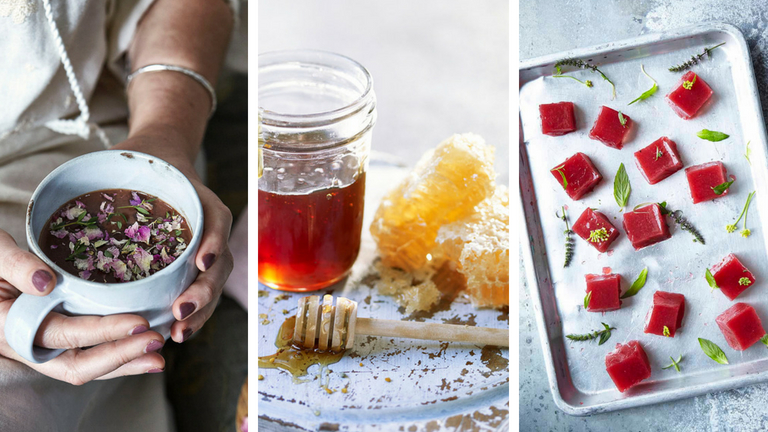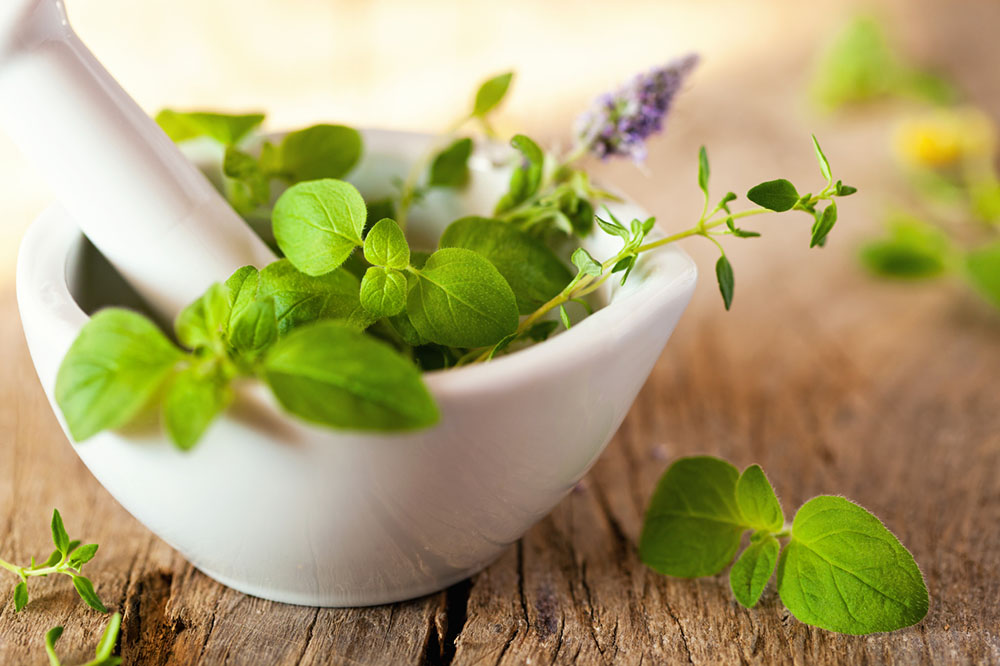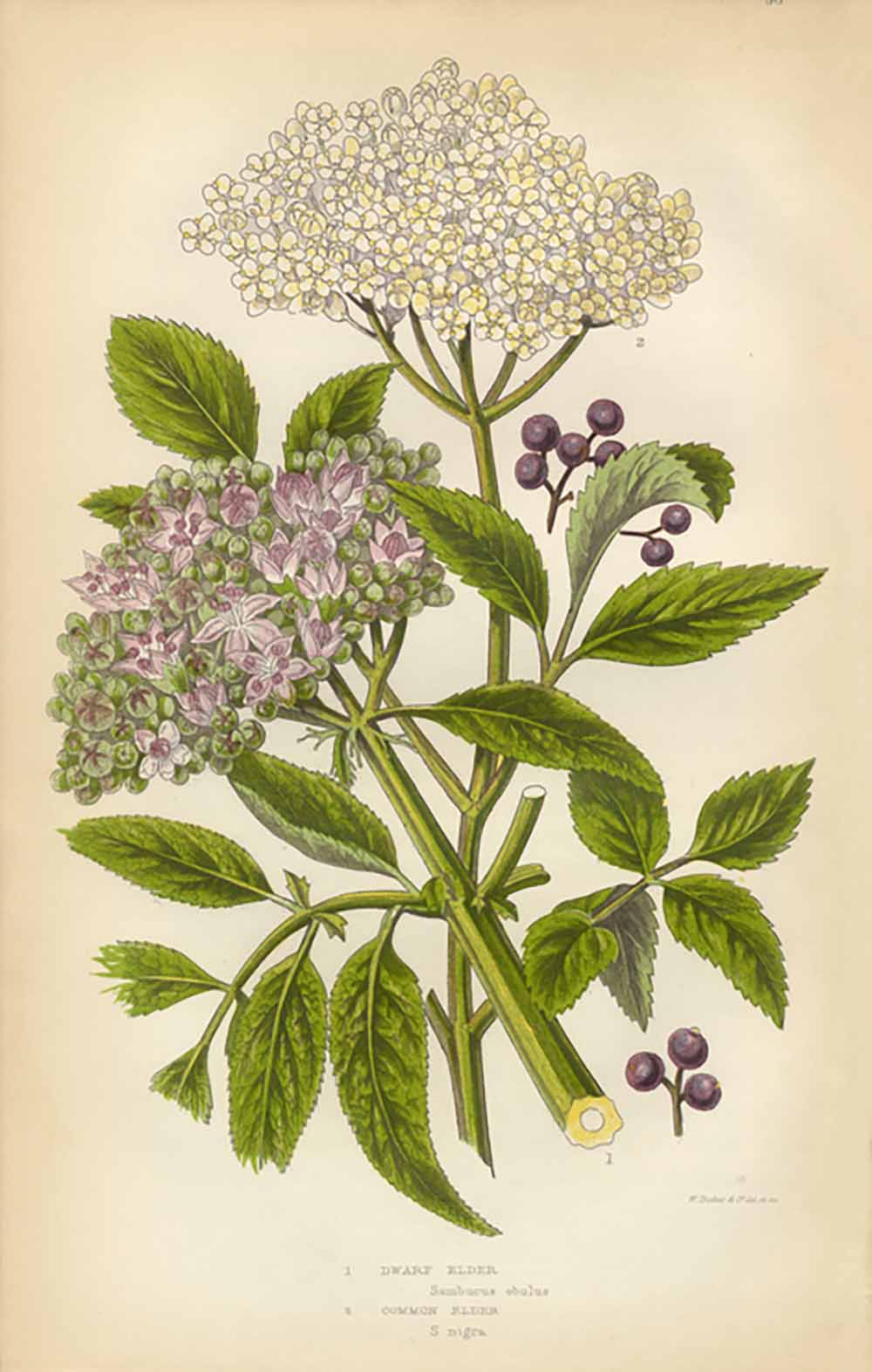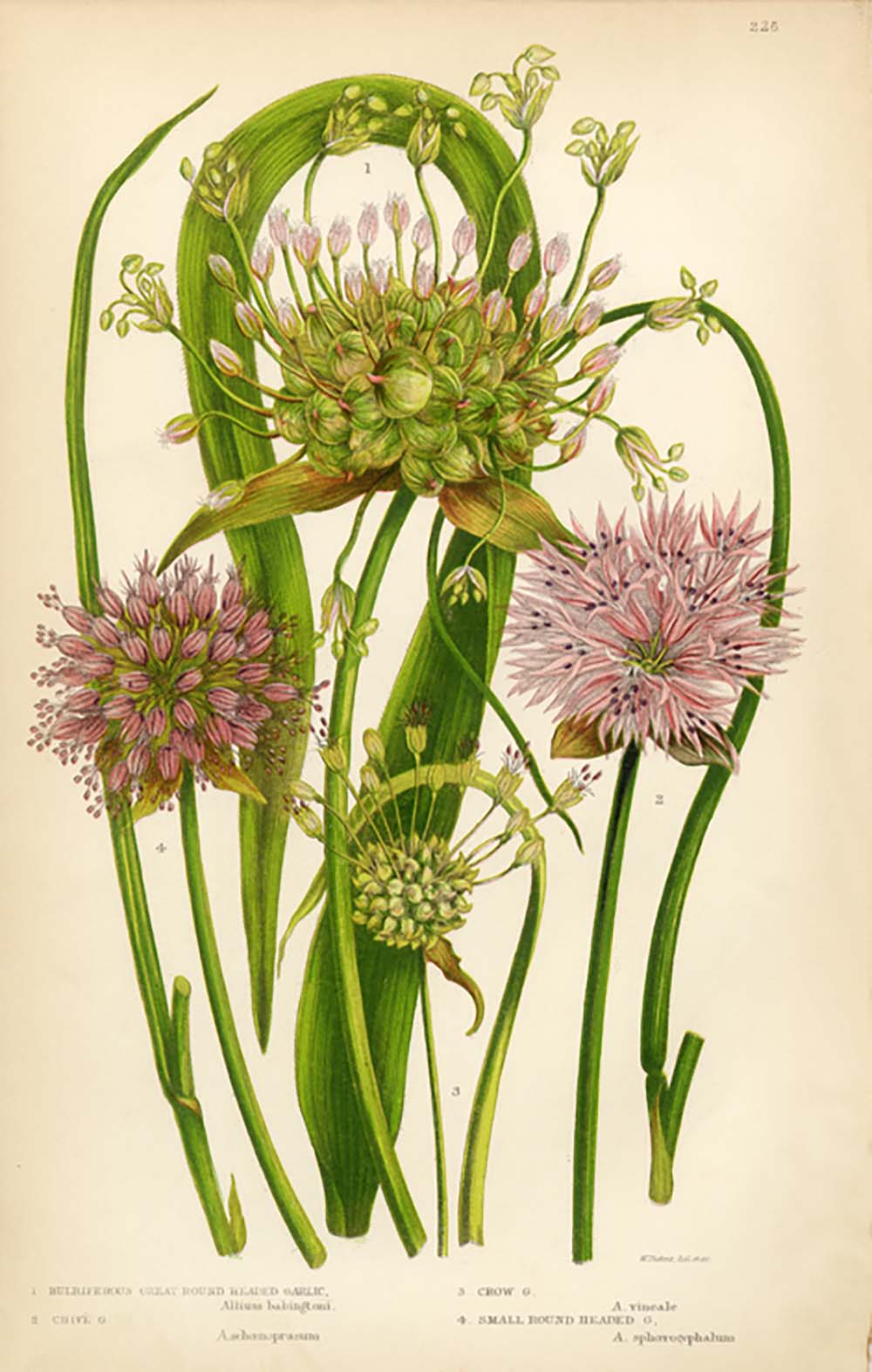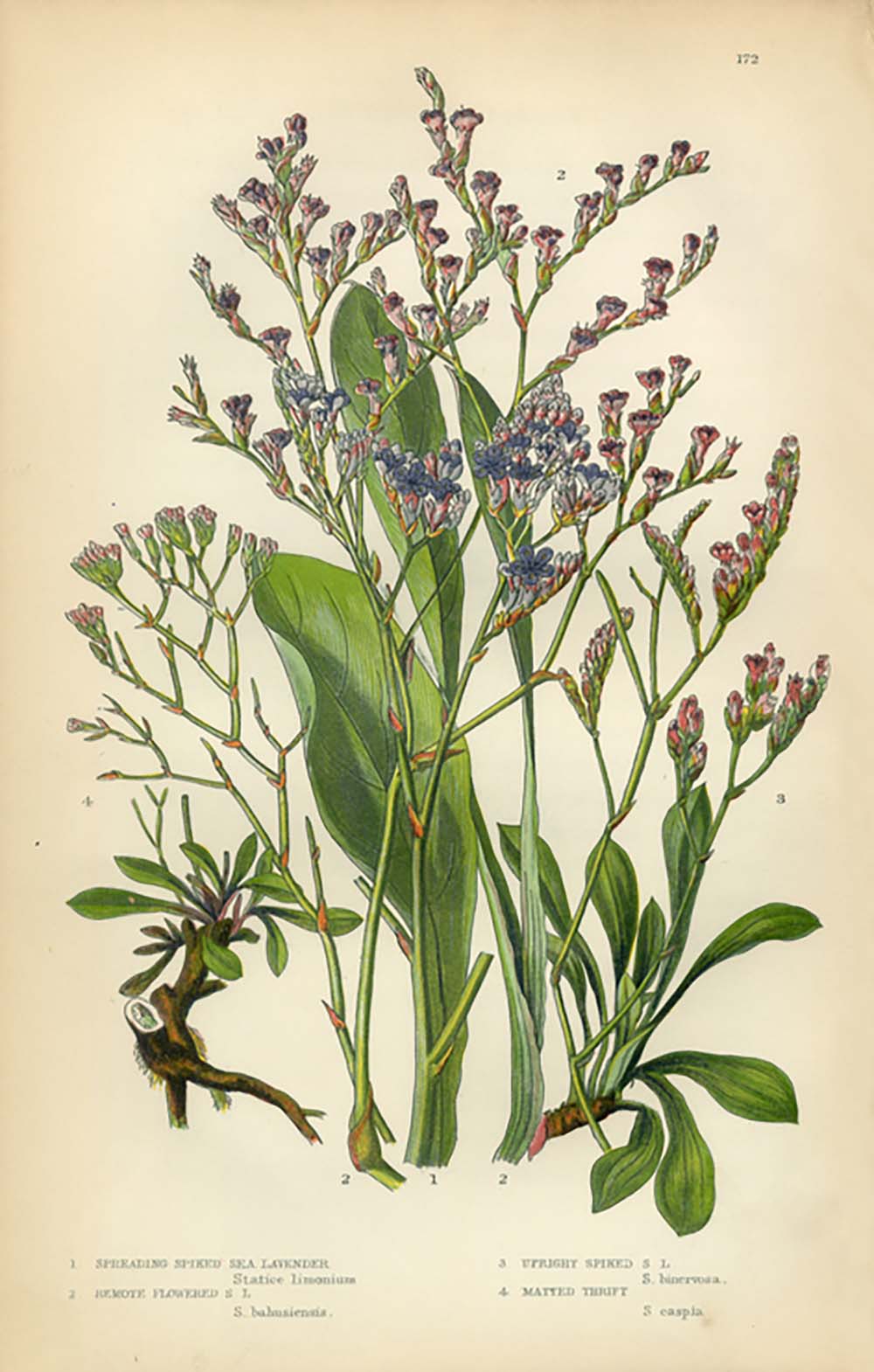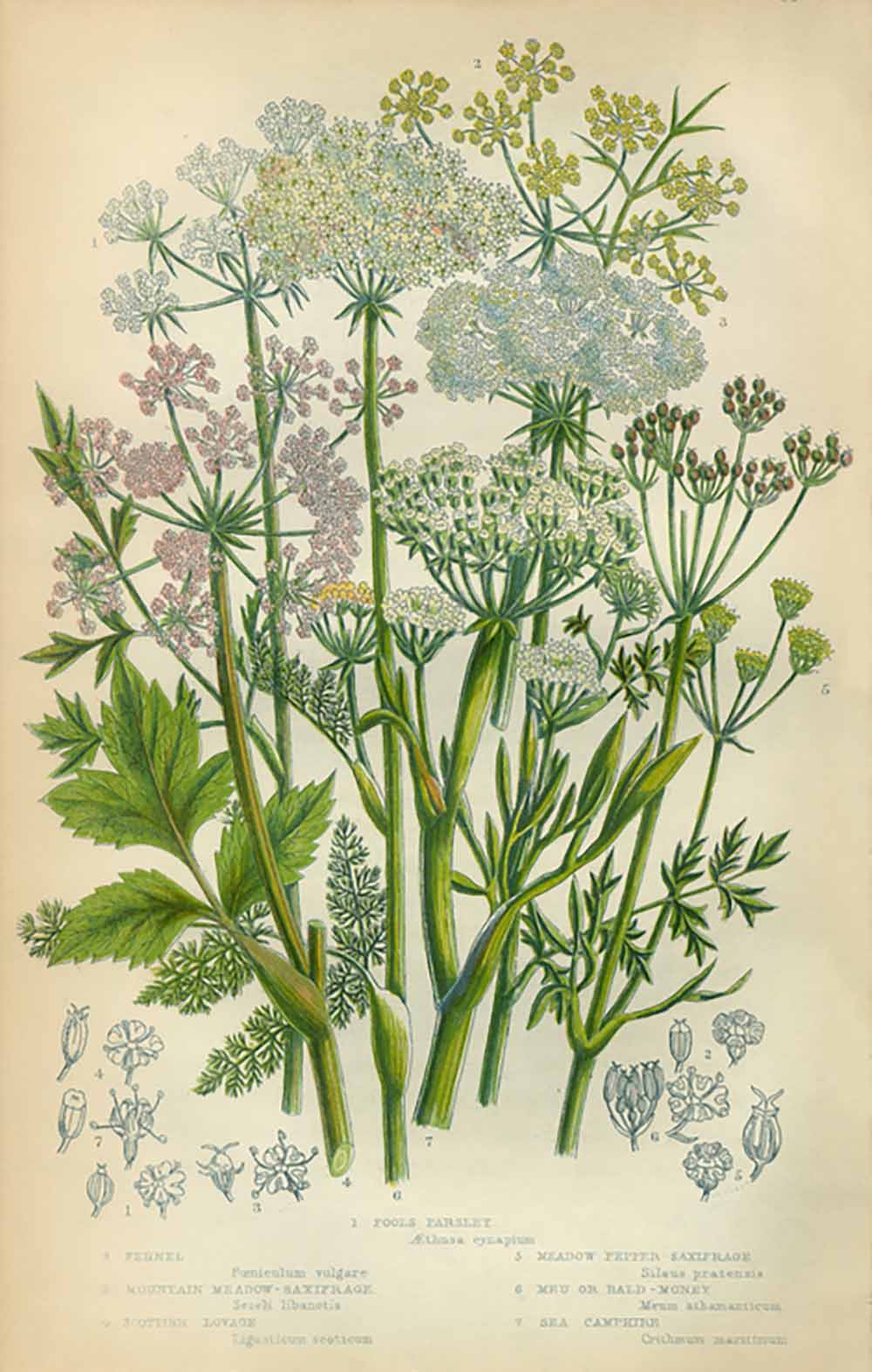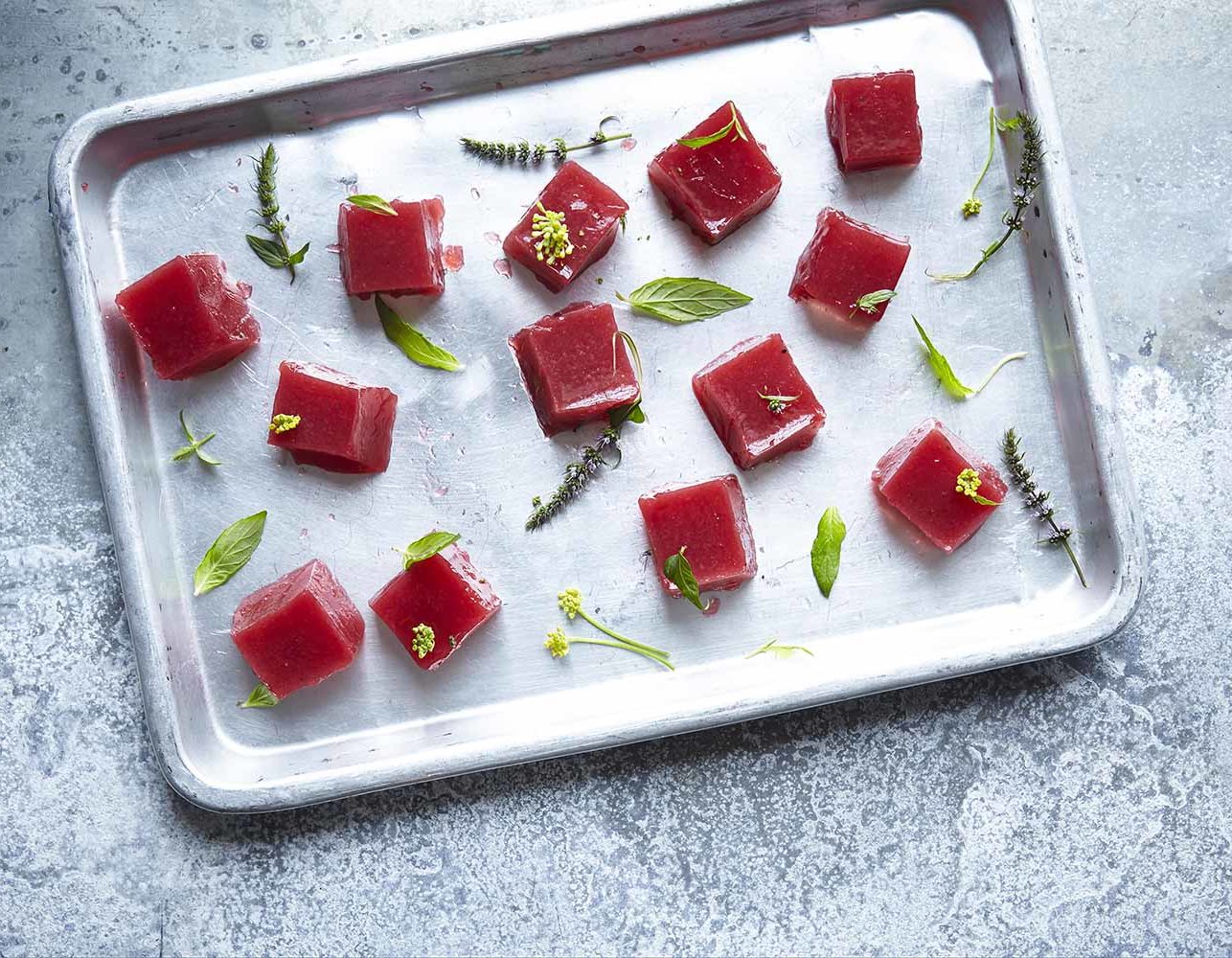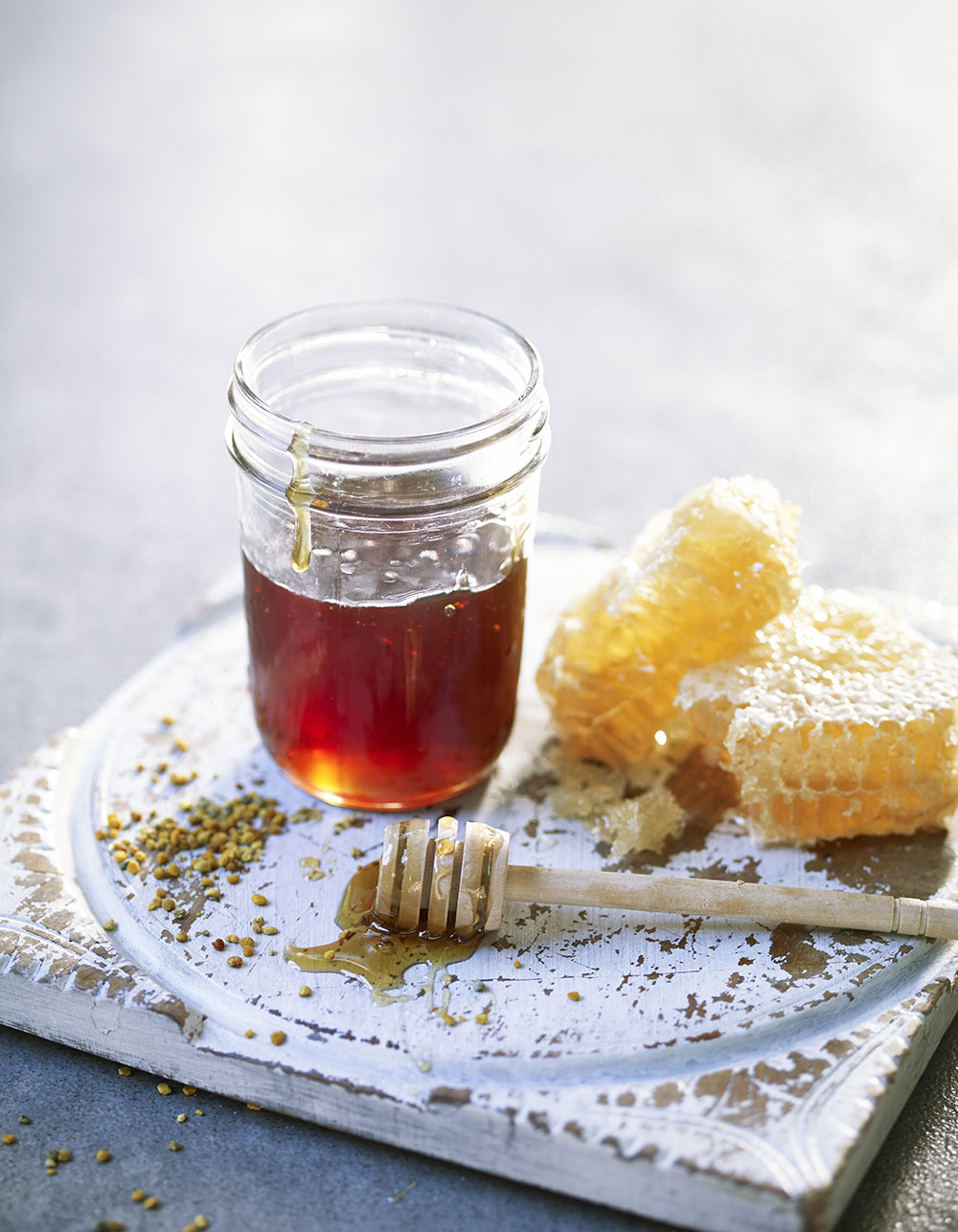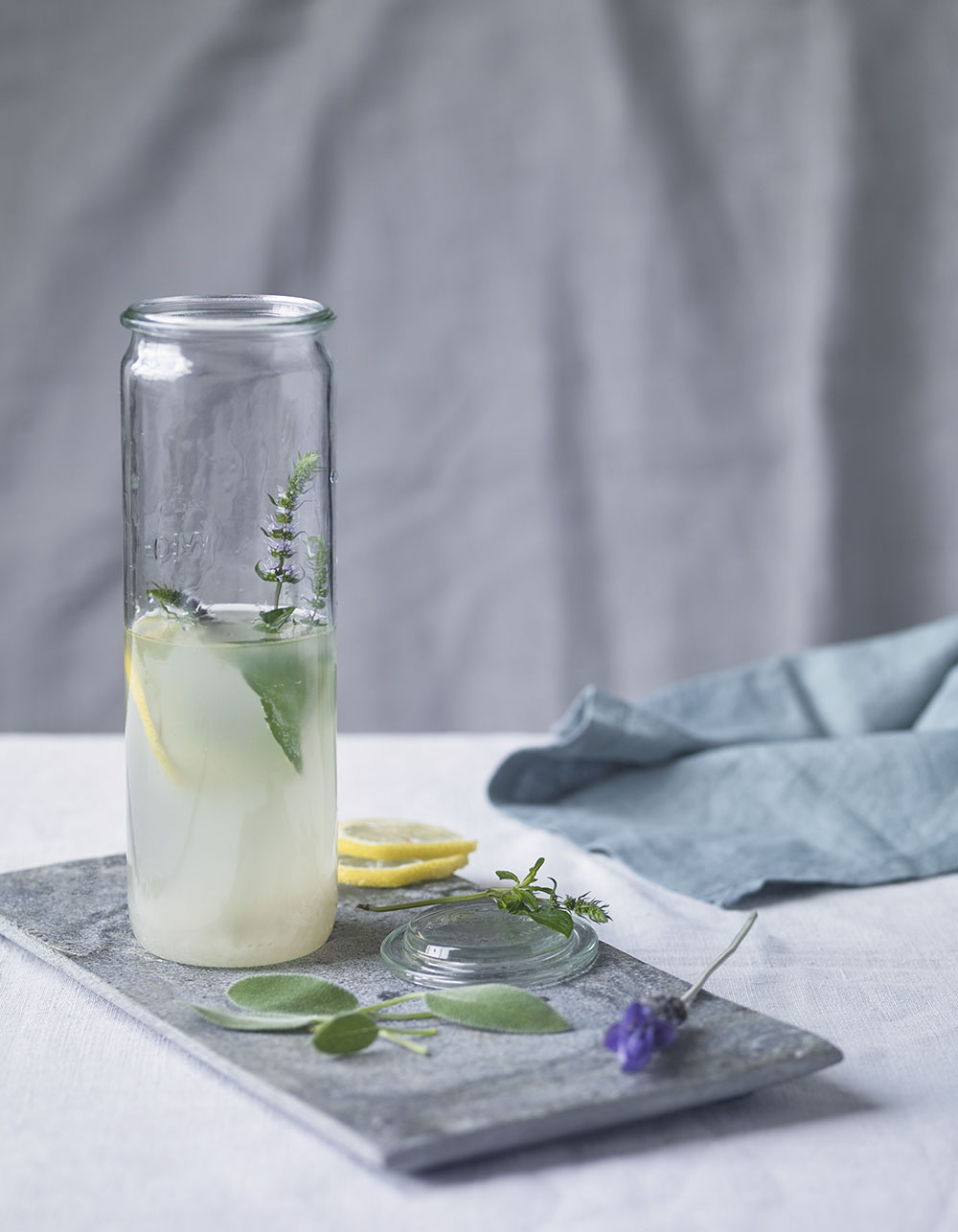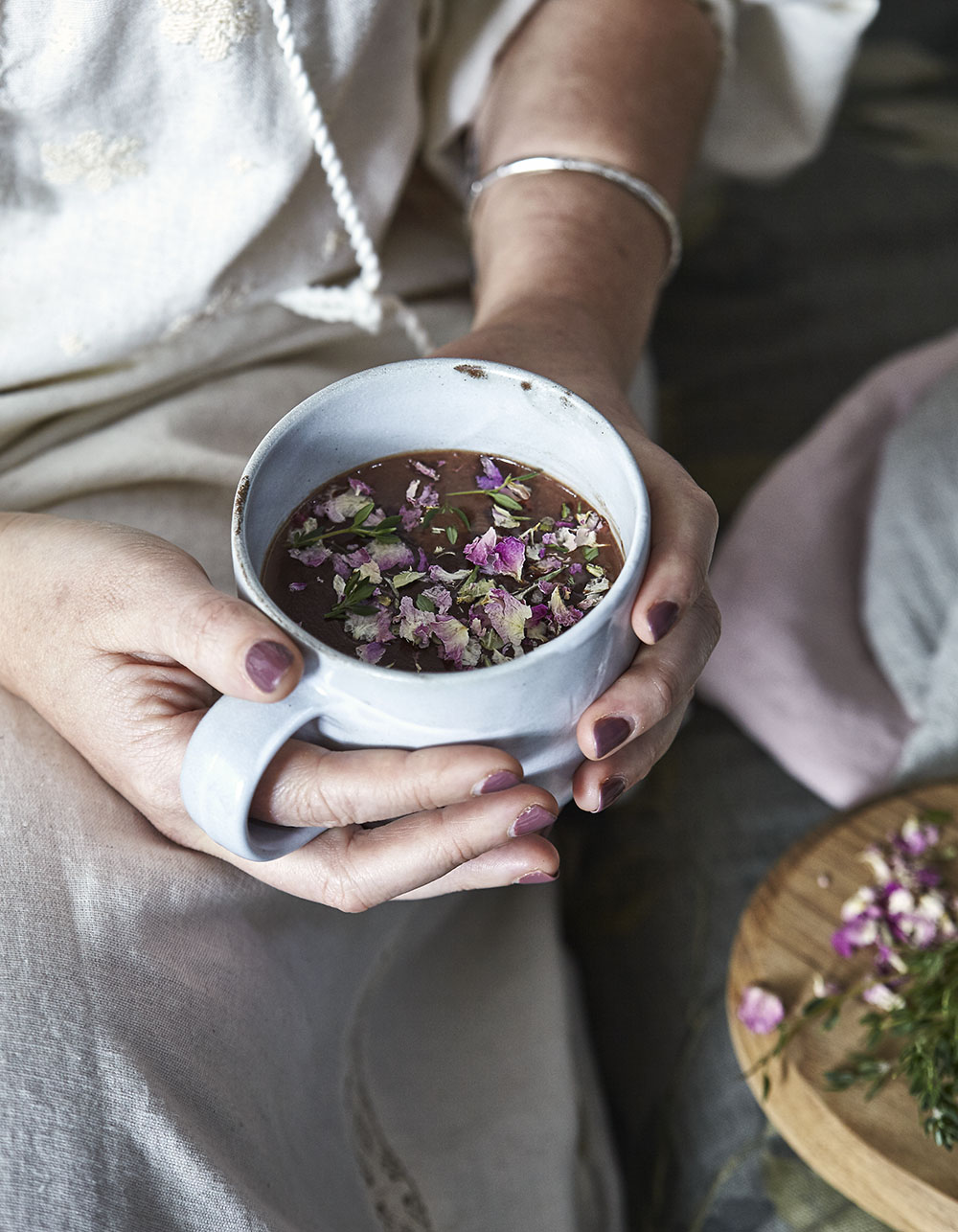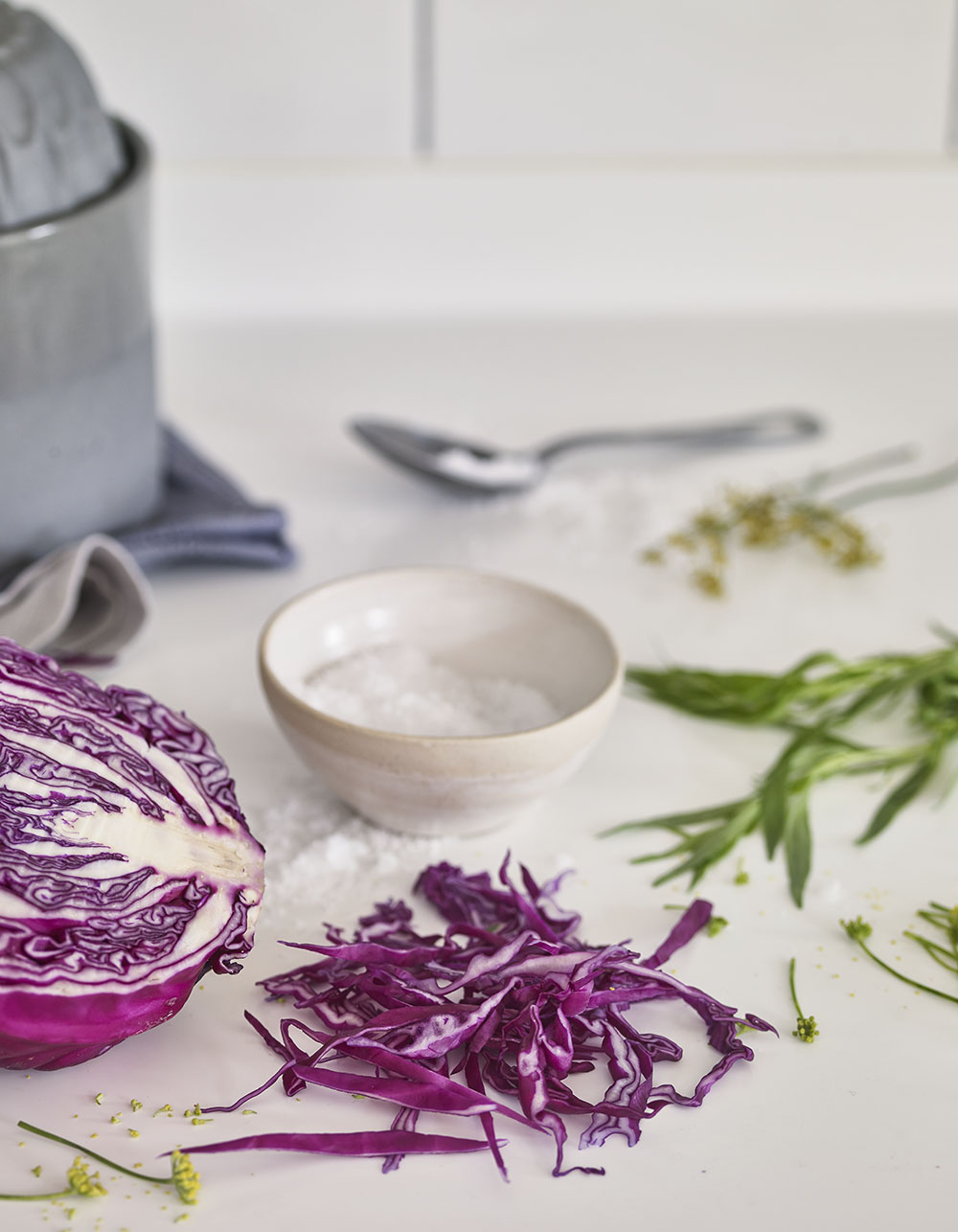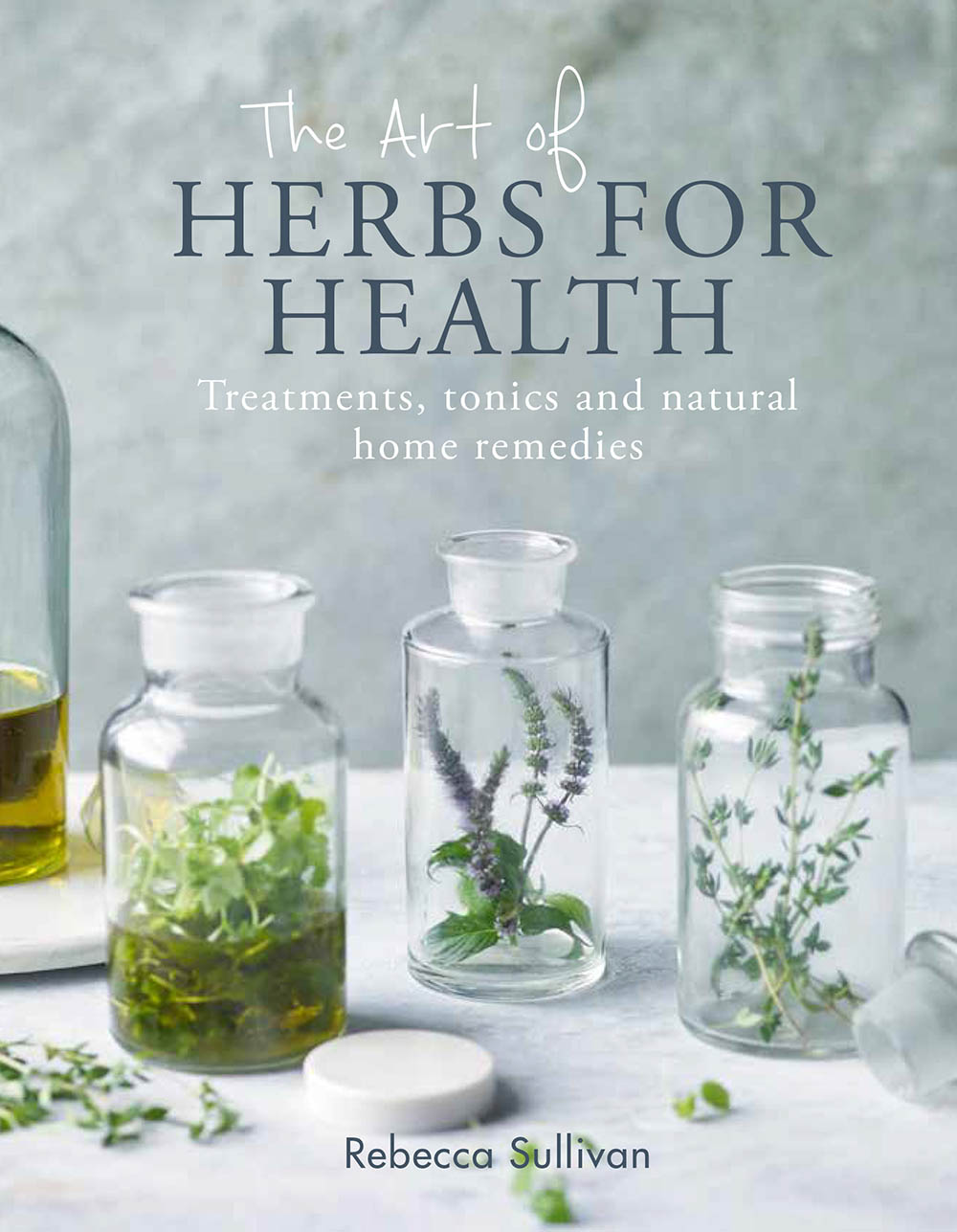Popping those pain killers far too often? Help your ailments naturally by using these 17 super herbs to help your health. Plus delicious recipes for you to try
Making your own medicine isn’t just about grinding away at herbs in a pestle and mortar like they did in the medieval times, no siree. In fact, making medicine can actually be quite easy.
Rebecca Sullivan author of The Art of Herbs for Health says that the definition of a herb is ‘any plant with leaves, seeds or flowers used for flavouring food, as medicine or as perfume’.
Medicine and supplements with good reason and excellent research are still a great and popular way to aid pain relief or stop those persistent colds that never seem to go away. But herbs and botanicals are mostly overlooked, when in fact the synergy of their nutrients, enzymes, vitamins and minerals makes them a strong and powerful healing option.
We have become so reliant on prescription antibiotics and the numerous amount of pills on offer to us, we forget that once upon a time, these easily accessible medications weren’t so easily available at all, or simply didn’t exist.
So, what did people do? They had gardens and allotments and would grow their own medicine, through herbs and food.
‘Don’t ditch your doctor,’ says Rebecca Sullivan, or avoid seeking medical advice, but perhaps we should be utilising what nature can do for us too. Lets get out into our gardens and start using food as medicine, it will probably save us some money as well…
Here are 17 herbs that are commonly used in food and medicine that can provide an abundance of health benefits.
17 superherbs and their benefits:
Superherb #1 Angelica
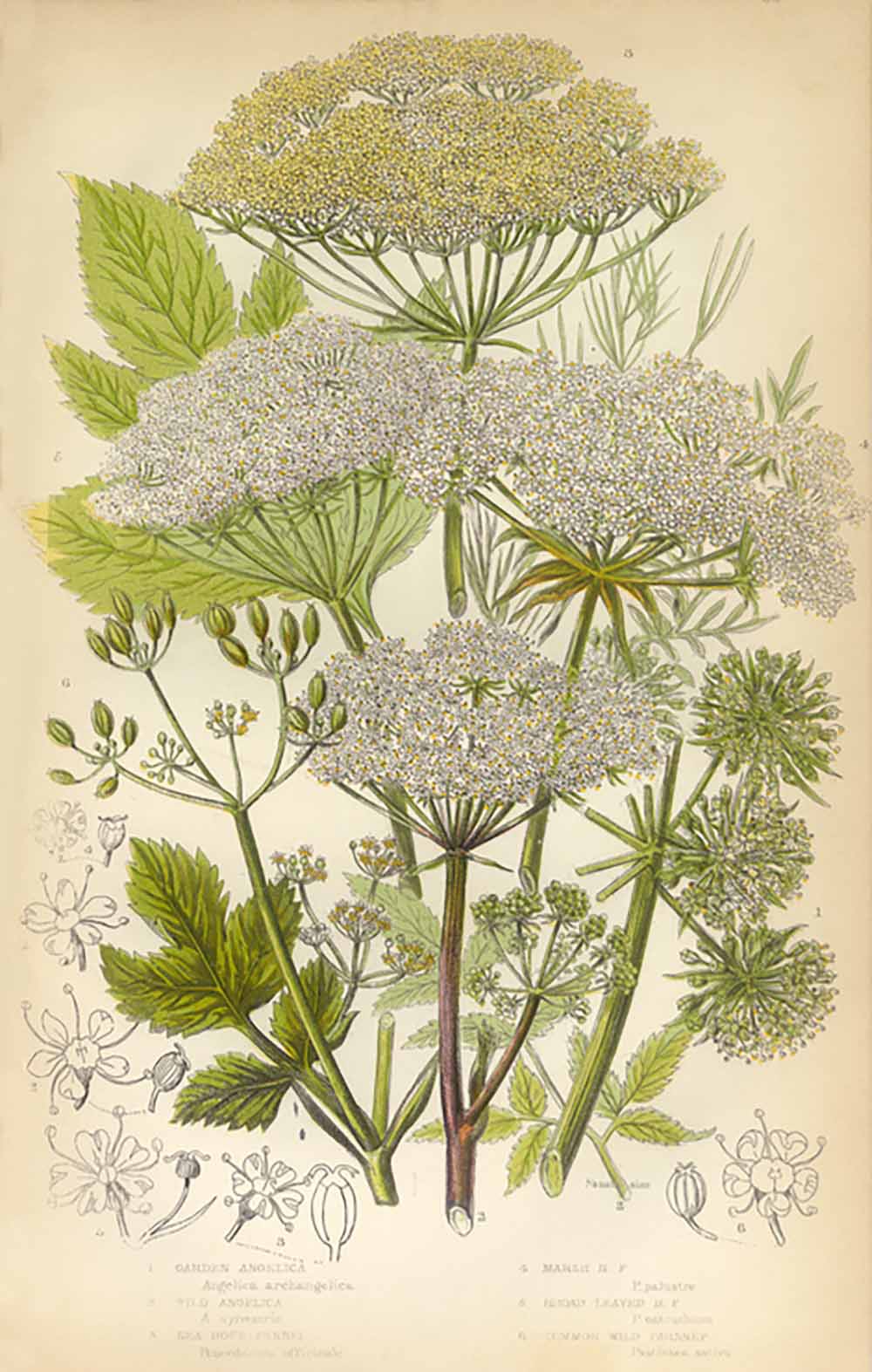
Angelica is a powerful anti-inflammatory that can help with arthritis. It can also be applied directly to the skin for nerve pain, joint pain and some skin disorders or used for heartburn, loss of appetite (anorexia), circulation, nerves, insomnia.
Anjelica has a bactericidal effect on the gastrointestinal tract, increasing the production of stomach acid. This helps to get rid of the bacteria that often causes various gastric ailments and discomforts such as IBS, gas and bloating.
This herb has also been known to increase urine production, improve sex drive and kill germs. Women can also use angelica to start their menstrual periods.
Superherb #2 Calendula
Helpful for: healing scrapes and cuts, insect bites, wrinkles and age spots.
The petals of calendula are edible and are traditionally used in soups, salads and stews. The stems and leaves of calendula can be used to produce a powerful chemical extract rich in anti-inflammatory and antioxidant compounds.
Calendula is mostly known for its healing abilities. If used as a flower oil, it can be applied to cuts, scrapes, insect bites and bruises to help quicken the healing process. Calendula can also affects blood flow to skin cells, providing antioxidant protection that reduces the appearance of wrinkles, age spots and visibility of scars. (Try Calendula Bath Cream, £13.99)
Also effective in killing bacteria, calendula can be found in hygiene products such as mouthwash, toothpaste, body soaps and shampoos.
Superherb #3 Dill
Helpful for: digestion and detoxing.
Dill belongs to the celery family and is an excellent source of calcium, manganese and iron. The calcium in dill alone is very impressive, just one tablespoon of dill contains more calcium than one-third of a cup of milk.
Full of antioxidant properties, dill has been used as a disinfectant and as a soothing medicine
Dill is used as a natural remedy for constipation. The essential oils found in dill have a stimulating effect on the digestive system. Dill aids the peristaltic motion of the intestine (the passage and movement of food), making bowel movements easier.
Dill has been used as a medicinal herb since the ancient times of the Egyptians. Full of antioxidant properties, dill has been used as a disinfectant and as a soothing medicine, the essential oils are effective against fighting bacteria and fungus, making it a potent and widely used natural medicine.
Herb #4 Echinacea
Helpful for: cold and flu symptoms.
Echinacea is a native North American coneflower, discovered and traditionally used as a herbal remedy for more than 400 years by the Great Plains Indian tribes. Several species of the echinacea plant are used to make medicine from its flowers, leaves and roots.
Echinacea is known to help ward off colds and flu symptoms. It stimulates our immune system so our bodies can fight off infections quicker. (Try Echinacea Tablets, £10.49)
Herb #5 Elderberry
Helpful for: fevers and skin conditions such as itchy skin or sunburn.
Elderberries have a sharp but sweet flavour, making them a popular dessert ingredient, but also used in syrups, jams, jellies, cocktails and beverages. Elderberry wine is very popular and can be made at home.
Elderberries are particularly useful in helping fevers and promoting healthy skin. Historically, elderflowers were used externally as a wash, infused oil, cream or salve. Elderflower washes and lotions are used for red, inflamed or itchy skin. It can also be used to treat rashes, sunburn and rosacea. (Try Immunoberry Liquid, now £10.92)
Herb #6 Fennel
Helpful for: digestion, gas, IBS, detoxing and chesty coughs.
Fennel is a well known vegetable and herb that can be used as a household remedy for a variety of health problems. Fennel is known to help with digestive disorders such as gas, acid stomach, IBS, cramps and even motion sickness.
Read more: Roasted peppers recipe with fennel for beginner cooks
Fennel is also a diuretic, increasing the frequency and amount of urination. This helps to remove toxic substances from the body.
Fennel can additionally be used as an effective herbal remedy for respiratory congestion and is a common ingredient found in cough syrups. (Try Pukka Herbs Night Time Capsules, £7.45)
Herb #7 Garlic
Helpful for: colds and flu, blood pressure and cholesterol.
Garlic is a plant that belongs to the onion family (which makes sense given that well known potent smell). Garlic not only smells strong and delicious but tastes it too, making it a very popular cooking ingredient. Garlic contains a sulphur compound called allicin, which is responsible for that distinct garlic smell.
If you are susceptible to colds then adding garlic to your diet is known to help fight off colds and flu. Garlic is also known to improve blood pressure, lower cholesterol and boost circulation. (Try Bio Health Whole Garlic capsules, £8.45)
Herb #8 Hawthorn
Helpful for: heart health, blood pressure and angina.
Hawthorn fruit, leaves and flowers are all used for medicine and hawthorn fruit can be found in the form of little red berries. The berries are sweet and tangy, often used to make jams, jellies, wines and cordials.
Hawthorn is known as ‘the heart herb’ due to its ability to uplift and strengthen the heart both emotionally and physically. For centuries, the hawthorn berry has been used as a natural remedy for many kinds of serious heart problems including high blood pressure, irregular heart beat, congestive heart failure and even angina.
Herb #9 Lavender
Helpful for: anxiety, stress relief and insomnia.
Other than smelling wonderful and being full to the brim of essential oils; lavender is also used in food, cosmetics and herbal medicines. For culinary use, lavender is used in salad dressings, sauces, honey, teas and beverages.
Lavender offers a large range of health benefits but is mostly used for anxiety and stress relief. The natural and organic compounds are found in its leaves and flowers, perfect when rubbed onto the temples. (Try Lavender Liquid Soap, £7.69)
Brewing lavender tea is popular when trying to lower stress and anxiety levels but is mostly beneficial to those who suffer from insomnia or sleep apnea.
Due to the flower’s calming impact on the nervous system it has been used to induce sleep and relaxation for thousands of years.
Herb #10 Lemon balm
Helpful for: insomnia, depression, anxiety and migraines.
Lemon balm is a member of the mint family. Similar to lavender, lemon balm is used in fragrances, cooking and herbal medicines.
The flowering herb is used to produce an essential oil, and its leaves can be brewed to make a fragrant tea. It is used in traditional medicine to treat insomnia, depression, anxiety, migraines and gastric conditions. Again like lavender, lemon balm can also be used to aid and induce sleep. (Try Heath and Heather Lemon Balm and Liquorice tea, £2.49)
Herb #11 Lemon verbena
Helpful for: digestion, anxiety, nausea, insomnia and weight-loss.
Lemon verbena leaves are dried to make an herbal tea and can provide a number of protective benefits due to verbena’s significant antioxidant content.
Lemon verbena can also be a useful tool for weight-loss, it keeps you feeling full and increases the rate of fat-burning.
Lemon verbena can be used as a food and as a flavoring additive. It is often added to poultry and fish dishes, as well as salads, dressings, beverages and some jams. However, traditional uses of lemon verbena as a medicinal herb have yet again become popular.
Lemon verbena can aid a whole host of health issues. It has been said to help with inflammation, digestion, anxiety, nausea and insomnia. Lemon verbena can also be a useful tool for weight-loss, it keeps you feeling full and increases the rate of fat-burning. Is there anything it doesn’t help with?
Herb #12 Liquorice
Helpful for: IBS, heartburn and eczema.
Liquorice isn’t just that well known sweetie. Liquorice root has also been used for its medicinal benefits for centuries.
Liquorice can help to soothe the stomach in cases such as food poisoning and IBS. Liquorice can also help clear your respiratory system, is good for heartburn, helps to ease a sore throat and can be a successful dermatological treatment for skin conditions such as eczema due to its antibacterial properties. Who knew liquorice had THAT many benefits..
Herb #13 Mint
Helpful for: digestion. IBS, chesty coughs and asthma.
Not just a garnish for your mojito, mint is an extremely popular herb. Used and consumed in food and beverages, from teas and alcohol to dressings and desserts. Eating and drinking mint is great for our health, but mint can also be inhaled, applied to the skin or taken as a capsule. Mint can be found in cosmetics, perfume, toothpaste, insecticide and aromatherapy.
Mint is widely used and for good reason. Mint triggers the mouth to produce more saliva and digestive enzymes which hugely helps with digestion and IBS.
Mint is known as an ‘expectorant’, meaning that mint can encourage the body to eliminate mucus from the airways. Perfect for helping a chesty cough and even asthma. (Try Pukka Mint Matcha Green Tea, £2.99)
Herb #14 Sage
Helpful for: congestion, cold and flu symptoms, eczema, acne and psoriasis.
Sage is an evergreen shrub found in the Mediterranean region with blue and purple flowers. Going back a thousand years sage was used for protection against evil and to aid female fertility. Sage is full of antioxidants and has anti-inflammatory powers that have even been said to improve memory.
Nowadays however, sage is commonly used as a spice. Sage is also known to help ease congestion and respiratory issues and is often used in homemade remedies to help with cold and flu symptoms.
A salve can be created using sage leaves and can help soothe skin conditions such as eczema, psoriasis and acne.
Herb #15 Tarragon
Helpful for: digestion and insomnia.
Tarragon is best known for its culinary use, with a sweet flavour similar to liquorice or aniseed. However, tarragon is also used medically. The oils found in tarragon trigger the body’s digestive process, it also boosts saliva excretion which again helps treat digestive issues.
Tarragon tea before bed has been said to help insomnia, it helps to calm the nervous system and promote sleep. Tarragon is also said to promote menstruation, helping to maintain the overall health of the female reproductive tract.
Herb #16 Thyme
Helpful for: period pain, stress and immune system.
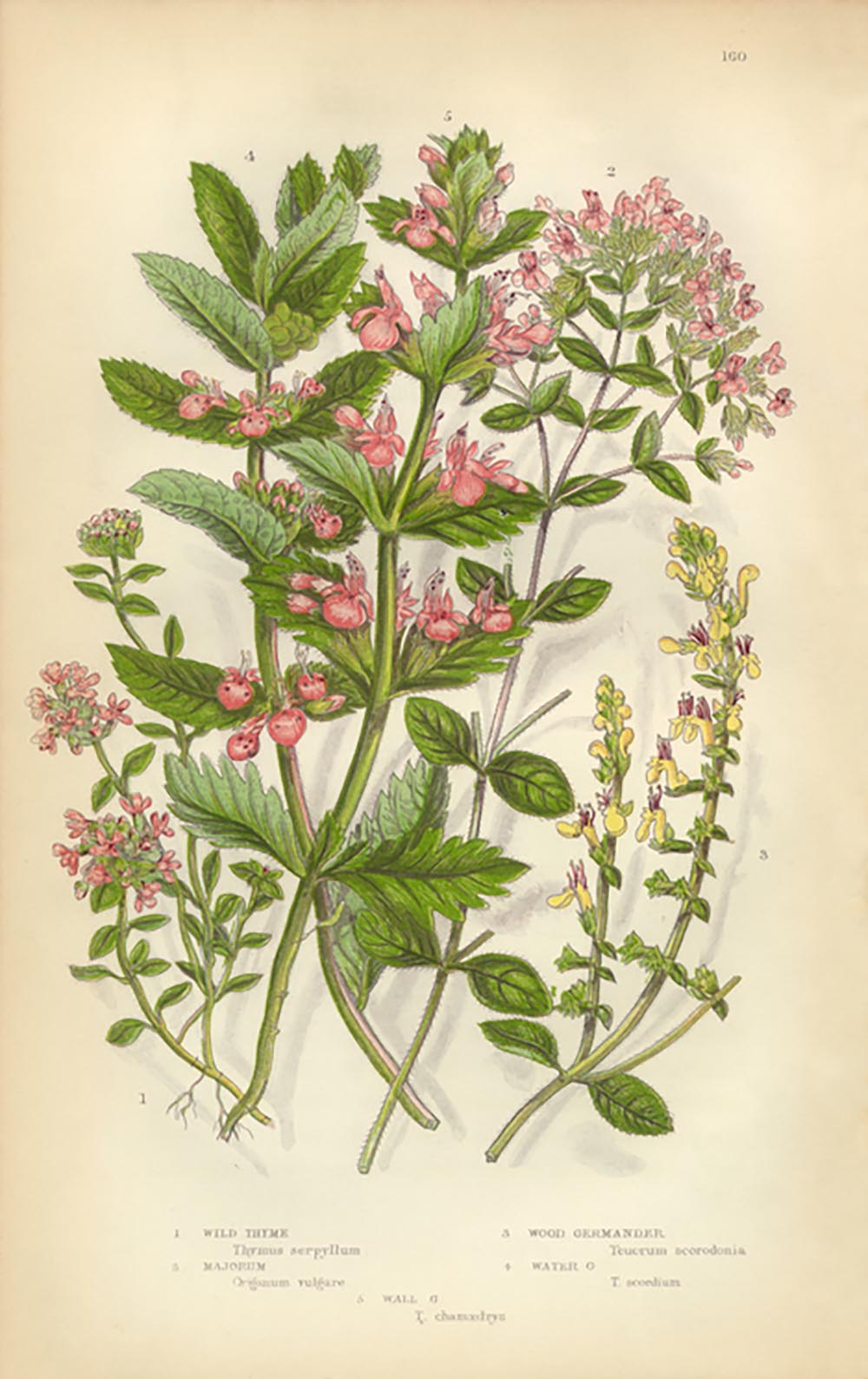
Thyme contains the vitamin B6. This vitamin affects specific neurotransmitters in the brain that are linked to stress hormones. Including thyme in your diet will therefore help to reduce stress and boost your mood.
Thyme contains another essential vitamin – vitamin C. Vitamin C is known to stimulate the production of both white blood cells and collagen, essential for our body’s immune system and to repair our cells, tissues and muscles.
Herb #17 Turmeric
Helpful for: anti-inflammatory, acne and psoriasis.
Turmeric is the new kid on the block and the new magical ingredient with an abundance of health benefits. Turmeric is a culinary herb and spice, mainly used in Indian curries.
Turmeric is said to calm down skin pores, decreasing acne and therefore acne scarring.
Turmeric is widely popular due to its magical anti-inflammatory and antioxidant benefits that help with arthritis, joint pain and muscle ache.
The antioxidant properties are effective in treating a wide range of skin conditions. Turmeric is said to calm down skin pores, decreasing acne and therefore acne scarring. Psoriasis flares can also be controlled with the use of this magical ingredient. (Try Kiki Health Organic Turmeric Powder, £9.99)
Want to try these herbs in some home cooking? Here are six recipes featuring these 17 healthful herbs
So, now that you know what these herbs can do for your health and are aware of their never ending list of benefits, thanks to Rebecca Sullivan, we have six recipes for you to try. From treatments to drinks and food these wonderful recipes have all the above herbs covered.
Recipe #1 Mint gut jellies
A few of my favourite things all mixed together in wobbly little jelly slices. The liquorice and mint help with digestion, so these are an all round hug for your belly. Best eaten after a meal.
Ingredients:
- 500g fresh raspberries
- 1 litre kombucha
- 1 tablespoon raw honey (Try Raw Health Organic Raw Pure Blossom Honey £5.69)
- ½ teaspoon ground liquorice root
- 2 tablespoons gelatine (I would strongly recommend checking the packet of the gelatine brand you use and follow instructions per litre of liquid here).
- 120ml filtered water, at room temperature
- 4 sprigs of mint, cut or ripped into small pieces.
How to make these mint gut jellies:
- Line a 30cm rectangular or 23cm square shallow cake tin with clingfilm so it hangs over the edges for easy removal once set.
- Put the raspberries, kombucha, honey and liquorice root in a blender and blend until smooth. Pass the mixture through a fine sieve to remove any seeds – you can skip this step if you don’t mind the seeds (which I don’t).
- Place the mixture in a saucepan over a low heat and bring to a simmer, but do not boil.
- Meanwhile, place the gelatine in a small bowl with the filtered water and whisk together, then leave to sit for 5 minutes.
- Add the soaked gelatine and water to the warm berry mixture and stir over a low heat until the gelatine is completely dissolved.
- Skim off any foam that is sitting on the top, if you like. Pour the mixture into the prepared tin, then leave to set in the fridge for at least 8 hours or overnight.
- Once set, remove the slab of jelly (using the clingfilm to help), turn it out onto a chopping board and then cut into small cubes or use a small cutter to cut out bite-sized shapes.
- Store in an airtight container in the fridge until needed. These jellies will keep in the fridge for up to a week.
Recipe #2 Herbal honey cough medicine
Honey provides many benefits, from antibacterial to anti-inflammatory. When the season turns cold, the dreaded coughs and colds begin. A sore throat can mean sleepless nights, and one of the simplest solutions is honey.
Honey acts in a similar way to cough syrup by coating the throat and soothing it. Add herbs to that and you have your very own natural cough syrup. Use it in your teas as a herbal sweetener or take a tablespoon before bed or when necessary.
Ingredients:
Try any of the following dried herbs, spices and fruits – added to raw honey
- angelica root
- calendula
- echinacea
- elderberry
- hawthorn berries
- lemon balm and lemon verbena (a mix of the two)
rose petals - turmeric root and black peppercorns (just a few)
- garlic (4–5 cloves)
How to make herbal honey cough medicine:
- You can use shop-bought dried or home grown and dried herbs. Just ensure they are ground reasonably finely using your mortar and pestle or in a food-processor.
- Mix equal proportions of honey with the herbs (so 100g honey to 100g dried herbs).
- Place the honey and herb mix in a double boiler and keep over a low heat for six hours, ensuring that the honey doesn’t exceed 43–46°C. If you don’t have a double boiler, then you can easily make one at home by placing a smaller pan inside a larger one, using jar lid rings or a trivet to keep the inner pan off the bottom of the larger pan.
- Stir the mix every now and then so it infuses evenly, remembering that you may need to add more water to the pan due to evaporation.
- After six hours, strain the honey while it is still warm, using a muslin cloth, or a piece of tighter weave muslin, or even a clean cotton T-shirt is fine.
- Press the mix through the material, wringing it until it has all come through. Pour into a sterilised jar and seal. Label and store in a cool, dark place for up to a year. Once opened, keep at room temperature.
Recipe #3 Sage and lavender kefir
Kefir and other fermented foods, are incredible at aiding good gut health. Unflavoured, it can be a little uninspiring, benefits aside. I love this combination of sage and lavender, but you can use this recipe as a base and make it your own with herbs that suit your tastes and needs.
Ingredients:
- 4 tablespoons caster sugar
- 1 litre coconut water
- 2 tablespoons water kefir grains
- sprig of sage
- sprig of lavender
- sprig of mint
- slice of lemon
- Sterilised 1 litre jar or bottle
How to make sage and lavender kefir:
- Mix the sugar into the coconut water until dissolved.
- Pour into a clean bowl, then add the kefir grains, sage, lavender, mint and lemon.
- Cover with a tea towel and leave to ferment in a cool, dark place for 2–3 days.
- Strain through a clean cloth or muslin (don’t use a metal sieve) into a sterilised jar, seal and store in the fridge.
- Drink within 3 weeks. It will taste tangy.
Recipe #4 Thyme & orange blossom hot cacao
Try this warm in winter and over ice in summer for a brunch addition or afternoon pick-me-up. The thyme can be subbed out for rosemary or sage, if you prefer. Or, if you are feeling adventurous, use all three (just a third of each).
Ingredients:
- 250ml whole milk
- 250ml double cream
- 150g dark chocolate (70 per cent cocoa solids is best), broken into small pieces
- 1 sprig of thyme, leaves picked
- 2 teaspoons orange blossom water
- 1 tablespoon honey (optional)
- 1 tablespoon dried rose petals, to decorate
How to make thyme & orange blossom hot cacao:
- Put all the ingredients (except the rose petals) into a small pan and heat slowly until the chocolate melts completely, but don’t let the mixture boil.
- Strain out the thyme leaves, pour into mugs and serve with rose petals sprinkled over as decoration.
- *For a dairy-free version, just switch out the cream and milk for your choice of nut, rice or oat milk*
Recipe #5 Herby kraut
Sauerkraut, which in German means sour cabbage, is an age-old method of preserving cabbage and other ingredients by fermentation. ‘Kraut’ was traditionally prepared to provide vital nutrition in northern Europe during the cold winters when vegetables could not be grown.
The same technique is still used today, with more knowledge now of the diverse health benefits associated with fermented foods. For best results, use local, organic or unsprayed ingredients in your kraut. When washing cabbages and other produce for fermenting, I also recommend using filtered water.
Read more: Fermented foods – are they worth the hype?
Ingredients:
- 500g green or red cabbage (keep one intact leaf to act as a bung for the top of the jar)
- 10g good-quality (not iodised) sea salt (such as Murray River or Maldon sea salt)
- 100g combined fresh dill and fresh fennel fronds or a pinch of each dried
- ½ any apple, peeled and grated (optional)
- filtered water, if needed
- Sterilised 500ml jar
How to make herby kraut:
- Slice the cabbage, cutting against the grain to create thin, medium-length strips, and place in a large bowl and add your sea salt.
- With clean hands (but not having used hand sanitiser, as this will kill good bacteria), start to massage the salt into the cabbage for 3–4 minutes.
- Set aside for the salt to pull the juices from the cabbage.
- Chop the fresh herbs, ready to be added to the cabbage.
- After 5–10 minutes, the salted cabbage will have released more juices and wilted.
- Continue to massage the cabbage until it has softened and a reasonable amount of brine has been created.
- Add the herbs and grated apple (if using) to the bowl and mix thoroughly.
- Now pack into your sterilised jar using your hands to press the cabbage mixture down tightly. You want it packed to within 2–3cm of the top of the jar with brine covering all of it. If the brine doesn’t quite cover it, top up with a little filtered water.
- Fold a small portion of the reserved cabbage leaf and place on top of the cabbage mixture to keep it submerged in the brine, but ensure there is still room to put a lid on.
- Wipe any bits from the rim of the jar using kitchen paper and put on the lid.
- Leave to ferment at room temperature for at least 4 days and up to 3 weeks. For a ferment using this technique, I find 7–10 days works well.
- Remember that gas (carbon dioxide) is released during the fermentation process, so it is important to open the lid to ‘burp’ the jar every day or two to release the gases, but be quick to reseal it so oxygen doesn’t get a chance to sneak in and spoil your ferment. So you will literally open the lid but not take it off or lift it up. I suggest ‘burping’ on days 3, 5 and 7.
- After this, remove the cabbage leaf and taste the kraut.
- If you are happy with it, replace the lid, refrigerate and enjoy within 2 months.
Recipe #6 Herby pesto
The most fabulous way of all time to use up leftover herbs is to make a pesto. You could also use carrot tops – I hate to throw anything away, so if I buy a bunch of carrots I’ll use up the tops in a pesto.
Ingredients:
- 3 tablespoons pine nuts or almonds
- 50g basil, roughly chopped
- large handful each of tarragon and mint
- 2 garlic cloves, minced
- zest and juice of 1 lemon
- 3 tablespoons grated Parmesan cheese
- olive oil
- salt and freshly ground black pepper, to taste
How to make herby pesto:
- Toast the nuts in a dry frying pan over a medium heat until they turn golden. Watch carefully and move them around the pan while they are cooking as they can burn easily.
- Tip onto a plate and leave to cool.
- Add the herbs and pine nuts to a food-processor and blitz until smooth.
- Add the garlic and lemon zest and juice and blitz again for a few seconds.
- Now add the Parmesan and then, with the processor running, add enough olive oil until you have the consistency you like for your pesto.
- Season to taste with salt and pepper and blitz again for a few more seconds.
- Spoon into an airtight container or jar and store in the fridge for up to a week (or freeze in ice cube trays for up to 3 months).
- Add more oil if it becomes too dry.
The Art of Herbs for Health by Rebecca Sullivan is published by Kyle Books (£9.99) and available to buy on Amazon. Photography by Nassima Rothacker.
More Healthista content:
5 quick and easy low-carb recipes you will LOVE
Buckwheat protein waffles recipe with blueberries
Spiralized salad recipe with cashew nuts and Japanese dressing
Why fish oil could ease your menopause and 9 other lifestyle changes to make right now
How St John’s Wort can help elevate mood and improve sleep
Like this article? Sign up to our newsletter to get more articles like this delivered straight to your inbox.



